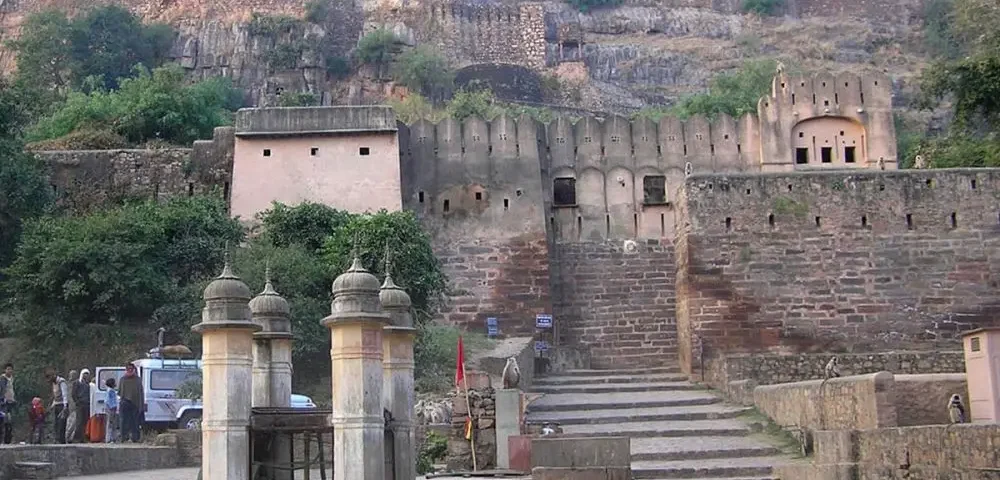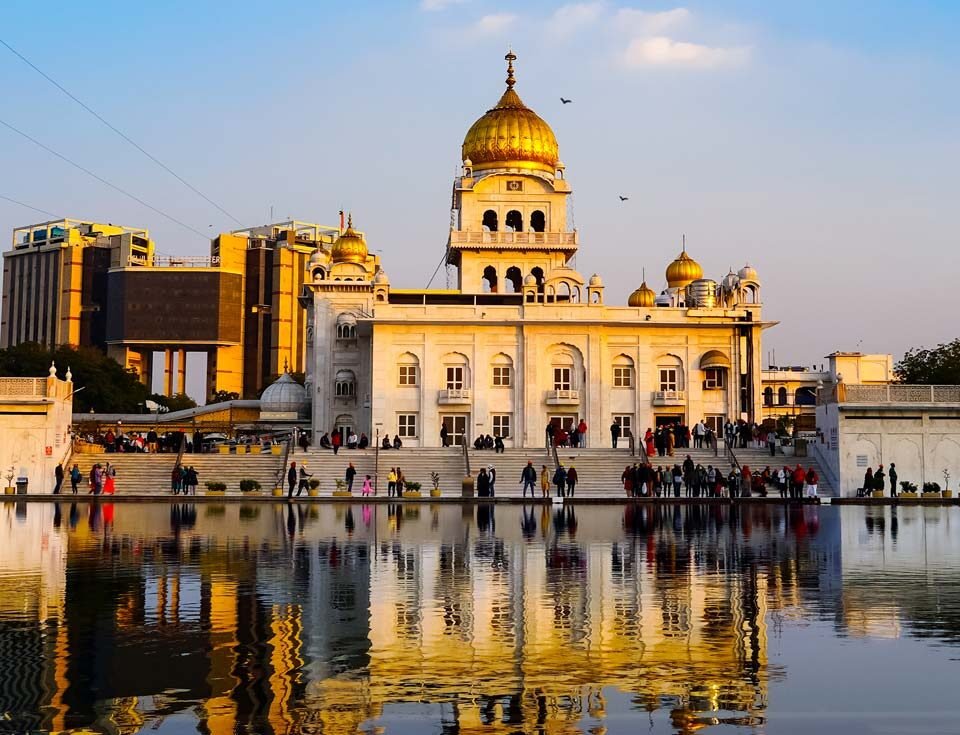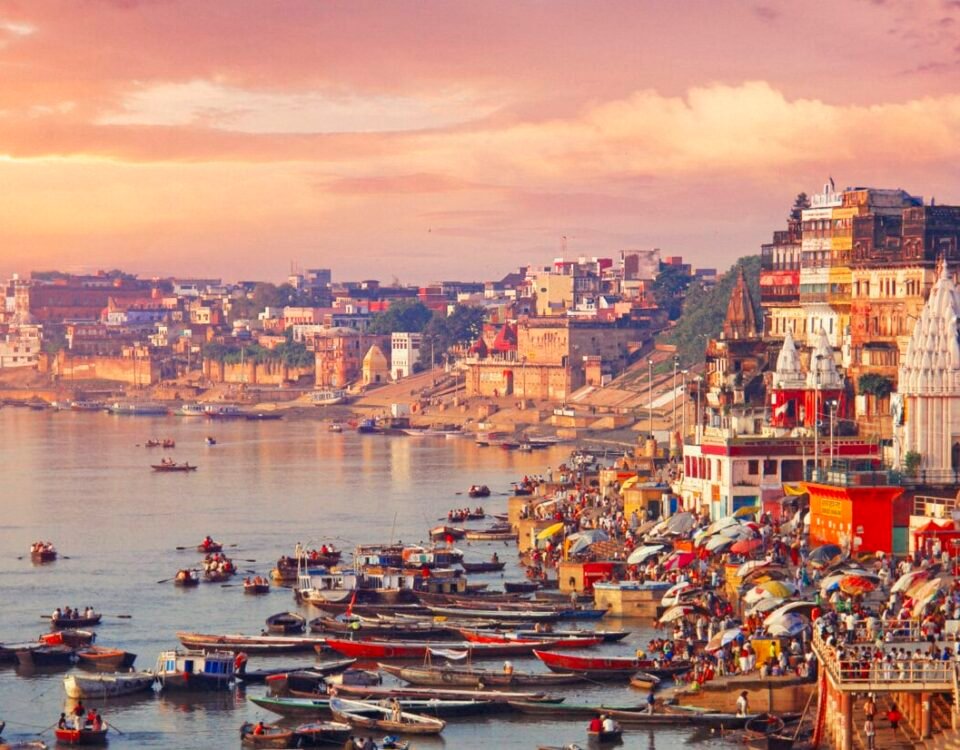Unveiling Ranthambore Fort: History, Architecture, Timings & Legacy

Red Fort Delhi (Lal Kila): History, Facts, Builders & Timings of India’s Iconic Monument
July 17, 2025
Royal Recipes & Desert Secrets: The Complete Guide to Rajasthan’s Famous Foods
August 6, 2025Tucked away within the wilderness of Rajasthan’s Ranthambore National Park lies the majestic Ranthambore Fort, a UNESCO World Heritage Site and a symbol of India’s rich historical tapestry. Perched atop a 700-foot-high hill, the fort offers panoramic views of the surrounding forests and landscapes teeming with wildlife. With roots dating back to the 10th century, Ranthambore Fort stands as a remarkable blend of Rajput valor, ancient architecture, and cultural heritage. Its strategic location and enduring legacy make it not just a marvel for history buffs, but also a must-visit destination for travelers exploring the heart of Rajasthan.
The Origins of Ranthambore Fort
Ranthambore Fort was built by the Chauhan rulers in the 10th century, during the reign of King Sapaldaksha. Positioned atop the Thanbhore hill, the fort was constructed to serve both as a defensive stronghold and as a royal residence. Its strategic elevation provided a commanding view of the surrounding plains and dense forest, making it an ideal location for monitoring enemy movements.
Over the centuries, the fort became a battleground for power among India’s greatest empires. Initially held by the Chauhans, it later came under siege by the Delhi Sultanate, particularly during the rule of Alauddin Khilji. His famous siege against Hammir Dev Chauhan remains one of the most heroic tales in Ranthambore Fort history. Eventually, the fort was annexed by the Mughals, who appreciated its strategic significance.
Today, the fort is an essential highlight for history enthusiasts and travelers exploring the Golden Triangle Tour, offering a deep dive into medieval Rajasthan’s glorious legacy.
Ranthambore Fort in Rajasthan’s History
The legacy of Ranthambore is deeply intertwined with tales of valor and political ambition. A crucial chapter in Ranthambore history unfolded during the reign of Hammir Dev Chauhan, one of the last great Rajput kings of the Chauhan dynasty. Known for his courage and unwavering defiance, Hammir Dev turned Ranthambore Fort into a symbol of resistance. His bold stand against Alauddin Khilji of the Delhi Sultanate in the 13th century is among the most celebrated stories in Ranthambore fort history. Despite being vastly outnumbered, Hammir Dev refused to surrender, and the fort became a site of a fierce and prolonged siege.
Following Khilji’s conquest, the fort passed through various hands, including the Mughals, who recognized its strategic value and maintained control for centuries. Under Mughal rule, the fort served as a hunting retreat and military outpost. Eventually, during the colonial period, it came under British supervision but lost much of its military importance.
Today, Ranthambore Fort is a lasting monument to Rajasthan’s warrior spirit and architectural brilliance. For those exploring India’s royal past, it forms a vital part of the Golden Triangle Tour, linking history, heritage, and cultural pride in a single destination.
Architecture and Layout of the Fort
Perched atop a rocky plateau in the Aravalli hills, Ranthambore Fort stands as a testament to the ingenuity and grandeur of Rajput architecture. Spread over 7 kilometers, the fort is surrounded by massive stone walls that rise dramatically from the cliffs, creating an imposing defensive structure once thought to be impenetrable.
Key Architectural Highlights:
- Thick Ramparts and Watchtowers: Built for warfare, the high fortifications and bastions offer panoramic views of Ranthambore National Park.
- Grand Entry Gates: The fort has several massive gateways such as the Naulakha Gate and the Hathi Pol, each historically designed to prevent enemy intrusion.
- Hammir Palace: This royal residence showcases early medieval Rajput design with courtyards, chambers, and intricately carved pillars.
- Temples Within the Fort:
- Trinetra Ganesh Temple: One of the most revered shrines, visited by thousands annually.
- Jain Temples: Intricately carved temples dedicated to Lord Sumatinath and Lord Sambhavanath.
- Trinetra Ganesh Temple: One of the most revered shrines, visited by thousands annually.
The architectural blend of Rajput and early medieval styles, combined with the natural backdrop of forests and cliffs, makes Ranthambore Fort a paradise for photographers and historians alike. Those embarking on a Golden Triangle Tour With Ranthambore find this site to be a perfect confluence of history, architecture, and nature.
Spiritual Sites Inside the Fort
Beyond its military past, Ranthambore Fort is a revered spiritual hub that draws pilgrims and devotees throughout the year. The most famous site within the fort is the Trinetra Ganesh Temple, believed to be one of the oldest Ganesha temples in India. Legend has it that King Hammir Dev Chauhan dreamt of Lord Ganesha before a battle, and upon victory, established the idol within the fort. Today, the temple is a symbol of faith, and devotees even send wedding invitations to the deity before any family celebration.
Apart from Hindu worship, the fort also houses two beautiful Jain temples dedicated to Lord Sumatinath and Lord Sambhavanath, showcasing finely carved pillars and domes that reflect medieval Jain craftsmanship. These sites exemplify religious harmony and offer a peaceful contrast to the fort’s rugged exterior.
Travel Tips:
- Remove footwear before entering temples.
- Carry water and visit early morning or evening for a serene experience.
- During Ganesh Chaturthi, expect large crowds and festive processions.
For spiritually inclined travelers, combining Ranthambore with a Golden Triangle Tour with Varanasi offers a deeply enriching journey through India’s sacred and historical heritage.
How to Reach Ranthambore Fort
The Ranthambore Fort is conveniently located just 12 km from Sawai Madhopur Railway Station, a well-connected stop on the Ajmer–Delhi rail line.
Getting There:
- Taxi or Car: A direct drive from the station to the fort takes about 25 minutes and operates throughout the day.
- Safari Jeeps or Auto‑rickshaws: Commonly used by tourists coming from the park or nearby hotels. Jeeps are especially convenient if you’re combining the visit with wildlife excursions.
- Self‑Drive Options: Available if you’ve rented a car—ample roadside parking is provided near the fort entrance.
Entry Points & Parking:
- The main entry gate is well-signposted off the access road.
- Parking areas are located a short walk below the gates—expect a 5–10 minute uphill walk to reach the fort summit.
- The path is well maintained, though visitors should wear comfortable shoes for the incline.
This approach makes the fort easily accessible for day visitors or those traveling via safari tours, particularly for those exploring the golden Rajasthan circuit.
Ranthambore Fort Timings & Entry Details
Planning your visit to Ranthambore Fort? Here’s everything you need to know about timings, entry, and permits:
Opening & Closing Hours
- Ranthambore Fort Timings:
The fort is open daily from 6:30 AM to 6:00 PM.
These hours align with the park’s safari schedules and provide ample time for exploration.
Entry Fee Details
- Indian Citizens: No entry fee.
- Foreign Tourists: A nominal fee may apply (varies by season and park regulations).
- Children under 15 are usually free.
Safari Permit Requirement
- Already on a safari tour? No additional permit is required to visit the fort if you’re entering as part of a Ranthambore National Park zone.
- Independent visitors can access the fort without a safari pass by entering through the main approach road near the park gate.
Travel Tip
To make the most of your Rajasthan journey, consider adding Ranthambore to the Best Rajasthan Travel Itinerary. It perfectly complements iconic spots like the Hawa Mahal Jaipur, and for food lovers, don’t miss exploring Must-Try Karnataka Famous Sweets while in India.
Best Time to Visit Ranthambore Fort
The ideal time to visit Ranthambore Fort is between October and March, when the weather in Rajasthan is pleasantly cool and perfect for sightseeing. During these months, daytime temperatures remain comfortable, making the uphill walk and fort exploration easier. Morning visits offer misty views and better wildlife spotting en route, while evenings provide golden light perfect for photography.
This period also aligns with the active safari season, allowing visitors to combine historical exploration with a thrilling jungle experience. For those seeking both spiritual depth and royal heritage, a Golden Triangle Tour with Varanasi pairs beautifully with a stop at Ranthambore.
Tips for Visitors
Exploring Ranthambore Fort is an enriching experience, but a little preparation goes a long way. Carry a water bottle to stay hydrated and wear comfortable shoes with good grip, as the path includes moderate uphill hiking and uneven stone steps. The fort complex is vast, so allow 2 to 3 hours to explore its temples, palaces, and viewpoints at a relaxed pace. Don’t forget binoculars—Ranthambore is home to vibrant birdlife and occasional wildlife sightings even near the fort walls. Many travelers on a Golden Triangle Tour with Rishikesh include this fort for its perfect mix of history, spirituality, and nature.
Conclusion
Ranthambore Fort is more than just a historical structure—it’s a stunning blend of Rajput history, sacred temples, and wild nature, all set within the breathtaking backdrop of Ranthambore National Park. From ancient Jain shrines to the iconic Trinetra Ganesh Temple, the fort captures the spiritual essence found in the 5 Famous Temples in North India. As one of the Famous Forts of Rajasthan, it’s a must-visit for travelers seeking culture, adventure, and serenity. Whether you’re combining it with a jungle safari or visiting nearby sacred sites like the Brahma Temple Pushkar, this destination promises a deeply memorable experience.
What is Ranthambore Fort famous for?
Ranthambore Fort is famous for its majestic architecture, strategic hilltop location, and rich historical legacy. Located within the Ranthambore National Park in Rajasthan, the fort is a UNESCO World Heritage Site under the Hill Forts of Rajasthan. It’s known for the Trinetra Ganesh Temple, which attracts thousands of pilgrims, and its panoramic views of the surrounding tiger reserve. Built in the 10th century, the fort was once a major Rajput stronghold that witnessed intense battles against the Delhi Sultanate. Today, it is visited by travelers for its blend of history, spirituality, and breathtaking scenery.
What is the ticket price of Ranthambore Fort?
As of the latest official update, there is no entry fee for Indian citizens to visit Ranthambore Fort. Indian nationals can explore the fort for free throughout the year. However, foreign tourists may be required to pay a nominal entry fee, usually ranging between ₹15 to ₹200 depending on the season and government norms. If you’re visiting the fort as part of a jungle safari tour, your existing permit generally covers the visit. Entry may be regulated during peak tourist seasons or religious festivals, so it’s advisable to check local tourism websites for updated pricing.
Who was the king of Ranthambore Fort?
The most renowned king associated with Ranthambore Fort was Raja Hammir Dev Chauhan, who ruled during the 13th century. A valiant Rajput ruler of the Chauhan dynasty, Hammir Dev is remembered for his fierce resistance against Alauddin Khilji, the Sultan of Delhi. Despite being outnumbered, he defended the fort with unmatched courage, turning Ranthambore into a symbol of Rajput valor. His defiance during Khilji’s siege is one of the most iconic episodes in the fort’s history. Hammir’s rule marked the zenith of Rajput pride and independence before the fort eventually fell to the Delhi Sultanate.
When did Akbar capture Ranthambore Fort?
Emperor Akbar captured Ranthambore Fort in the year 1569 as part of his campaign to consolidate Mughal power in Rajasthan. The fort had been under the control of various Rajput rulers after the decline of the Delhi Sultanate. Recognizing its strategic importance, Akbar launched a well-organized military siege with advanced artillery and a massive army. After fierce resistance, the fort was surrendered to the Mughals. Its capture marked a turning point in Mughal-Rajput relations, paving the way for Akbar’s future alliances with Rajput kingdoms. Under Mughal control, the fort was later used as a military outpost and hunting lodge.




